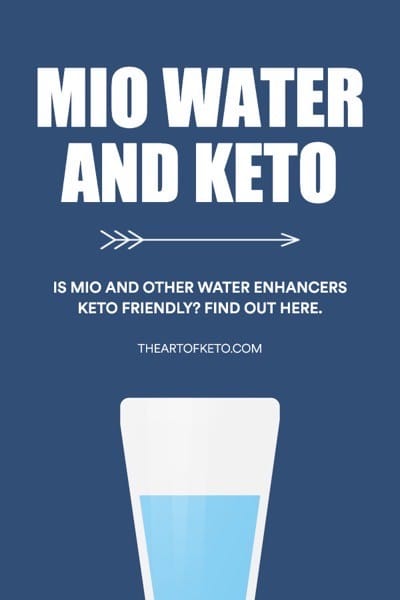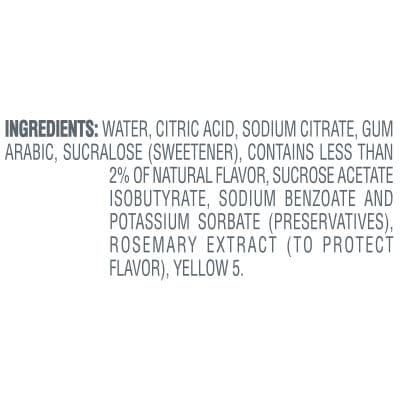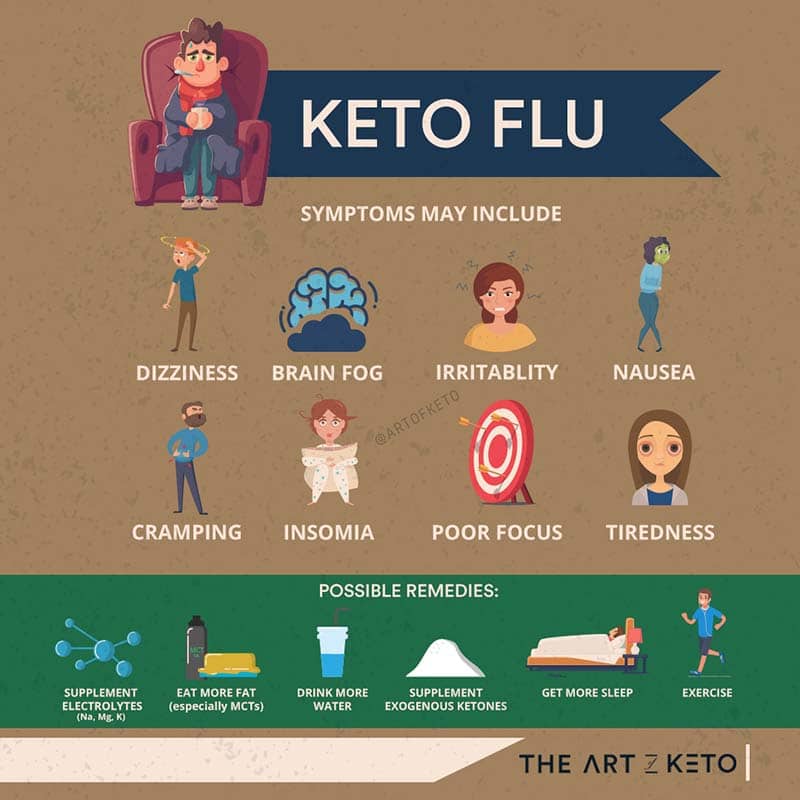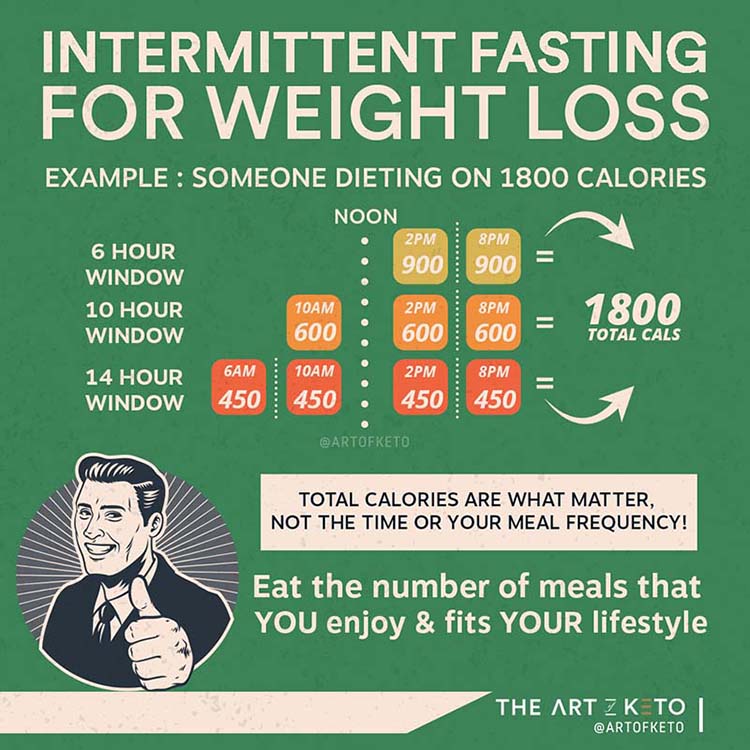Drinking plain water can be a drag sometimes, I get it… I indulge in a flavored beverage from time to time, such as a Coke Zero. For me, it gives me something a little sweet and even helps keep my hunger manageable.
When trying to get adequate amounts of water, sometimes giving it some flavor can make the process more enjoyable. This is where water enhancers like Mio come in, but is mio keto friendly?
Yes! A single serving of Mio has zero calories and less than 1 gram of net carbohydrates. Keto-friendly varieties of Mio include Mio original, Mio energy, Mio vitamins, and Mio electrolytes.
In this article, I’ll go over the different versions of Mio, what’s in them, which ones you should stick to, and some alternatives that may be more beneficial on your ketogenic journey.

Get Keto Cheat Sheet Magnets: Check it out now here
Table of Contents
Does Mio Knock You Out Of Ketosis?
There are no ingredients in sufficient enough of a quantity, more specifically sugars and carbohydrates, that will knock you out of ketosis.
Being that Mio has less than 1 gram of carbohydrate per squeeze, you should generally be safe having a serving or two a day of Mio.However, if you have a whole bottle of Mio a day, you may potentially be ingested 9 grams of carbohydrates since there are 18 servings per container.
Mio generally lists carbohydrates as less than 1g, which means it probably has ~0.5g of carbs per serving.
What’s In Mio?
The main ingredients in Mio are:
- Water
- Citric Acid
- Sodium Citrate
- Gum Arabic
- Sucralose (Sweetener)
- Caffeine *
- Potassium Phosphate *
- Malic Acid *
*are specialty ingredients in Mio energy, Mio Vitamins, and Mio Electrolytes
While Mio has other ingredients, they usually constitute less than <2% of the ingredients found in Mio.
We’ll focus on the main ingredients down below.

Water
Since ingredients are listed in order of volume, water is the first ingredient.
Everything within Mio must be diluted into a liquid so you can squeeze it into your water 🙂.
Citric Acid
Citric acid is found naturally in citrus fruits, such as lemons and oranges. However, citric acid, commonly used as an ingredient in foods and supplements, is manufactured.
Citric acid's primary use is to act as a preservative, in addition to boosting acidity and enhancing the flavor. The same citric acid in Mio is typically the same kind you would find in a diet soda or even some dairy products.
Sodium Citrate
Similar to citric acid, sodium citrate has a “sour taste,” but as you guessed it, also has a salty taste, hence the “sodium” citrate.
Sodium citrate is used as a food additive for flavor and as a preservative in many different foods.
Caffeine *
Mio energy primarily offers its energy benefits through caffeine, but also has tiny amounts of taurine, guarana, ginseng, and B vitamins.
Mostly found in tea, coffee, soft drinks, and chocolate, caffeine has made its way within the modern human diet.
Caffeine is one of the most well-studied “supplements” proven to aid in performance-enhancement in addition to fat oxidation.12
Mio contains 60mg of caffeine per serving of Mio Energy.
Want to learn more about fat burners or supplements while following a ketogenic diet? Here is a no B.S. guide to both down below.
- Can I take fat burners on keto?
- The Best Keto Supplements (evidence-based guide)
- Check prices and reviews of Mio Energy Variety Pack
Potassium Phosphate
One of the main ingredients in Mio Electrolytes is potassium phosphate, mainly for added potassium.
One of the three primary electrolytes you should be mindful of while following a ketogenic diet, potassium is often found in keto-friendly foods such as avocados and leafy greens.
Each serving (squeeze) of Mio provides 75 mg of sodium and 35 mg of potassium.
Compare that to one serving of frozen spinach, which contains 540 mg of potassium or half an avocado with 487 mg of potassium.
Electrolytes are crucial on a ketogenic diet, especially during the first couple of weeks. Dehydration and a lack of electrolytes are one of the main reasons people feel tired on keto or experience symptoms of the dreaded keto flu.

Malic Acid
Another main ingredient found in Mio electrolytes is malic acid. Malic acid is a chemical found in certain fruits and wines. As a food additive, malic acid is primarily used as a flavoring agent to give it a tart taste.
How Is Mio Sweetened?
Mio’s sweetener of choice is sucralose, which is an artificial sweetener most commonly known by Splenda.
Sucralose, or Splenda, is a non-nutritive sweetener, which means it contains virtually no calories or carbohydrates. If you’re worried about the sweet taste of artificial sweeteners knocking you out of ketosis, no need; they are keto-friendly.Sucralose does not affect blood sugar and contains no carbohydrates, making it perfectly acceptable to have while following a ketogenic diet.
However, there is one sweetener in particular that people have heard they should stay away from. Is Maltitol keto friendly? Let's find out.
Is Mio Bad For You?
There is nothing inherently bad about Mio that you should be worried about. However, don’t go crazy and squeeze the whole bottle in your water.
If you overdo it with Mio and use a bottle a day, you’ve wasted ~9 grams of your net carbohydrates for the day.
Just remember, too much of anything isn’t a good thing.Even water.
Can You Have Mio On Keto?
Since Mio has no carbohydrates and no effect on blood sugar, Mio is perfectly safe to have on a ketogenic diet.
If it helps you stay hydrated, I’m all for having people use water sweeteners like Mio and Crystal Light to flavor their water on keto.
Can You Drink Mio While Intermittent Fasting?
People often ask, will mio break a fast? Mio WILL break a fast, but context is essential when asking this question.
Are you intermittent fasting to stimulate autophagy and other health benefits? Then skip the Mio and drink plain water.
Are you intermittent fasting to expedite weight loss? Mio is excellent as there is nothing inherently more beneficial to intermittent fasting for weight loss versus had you eaten the same amount of calories over the day.
Unless intermittent fasting allows you to adhere to your diet better, there is no inherent benefit to intermittent fasting for weight loss purposes. 3
Eat at times of the day that fit your lifestyle and allows you to adhere to your diet.

Will Mio Hinder Weight Loss Or Make You Gain Weight?
Mio contains virtually no calories, so it’s highly unlikely that Mio will help contribute to weight gain and hinder weight loss.
HOWEVER, since Mio does add flavor to your beverage, the sweet taste of having Mio may trigger specific individuals to crave other sugary foods and drinks.
If this is you, it may be best to stay away from items that are artificially sweetened, even if they are “keto-friendly.”
The Different Flavors Of Mio
Mio carries four different varieties, original, energy, vitamins, and electrolytes. Each one of the different types of Mio has its own flavors listed below:
All types of Mio are keto-friendly.
Mio Original
- Cherry Blackberry
- Mango Peach
- Blueberry Lemonade
- Sweet Tea
- Cranberry Raspberry
- Berry Pomegranate
- Berry Grape * my favorite
- Lemonade
- Fruit Punch
- Strawberry Watermelon
Mio Energy
- Black Cherry
- Tropical Fusion
- Wicked Blue Citrus
- Green Thunder * my favorite
- Strawberry Pineapple Smash
- Acai Berry Storm
- Iced Vanilla Java (made with coffee)
- Iced Mocha Java (made with coffee)
Mio Vitamins
Mio Vitamins offers both an artificially sweetened and a naturally sweetened version with stevia instead of sucralose.
- Orange Tangerine
- Orange Vanilla
- Orchard Apple
- Blackberry Raspberry (naturally sweetened) * my favorite
- Tropical Cherry (naturally sweetened)
Mio Electrolytes
- Lemon Lime
- Arctic Blast * my favorite
- Berry Blast
- Orange
How To Use Mio
You can use Mio by gently squeezing your favorite flavor into an 8oz glass of water, more water for a stronger taste, and less water if you want it more diluted.
I like to use mio in carbonated water, aka fizzy water, aka fancy water.
Where Can You Find Mio?
Mio first came out in 2011 and is manufactured by Kraft. You can find Mio at nearly every grocery store or purchase it online.
If you’re looking to try Mio for the first time, I would suggest trying a variety pack so you can find which flavors you enjoy.
What Are Some Alternatives To Mio?
There are quite a few “water enhancers” or water alternatives like propel water on the market, but depending on what you are looking for, there are similar alternatives.
In my opinion, the vitamin and electrolyte versions don’t offer much in terms of added vitamins or electrolytes. If you’re looking for a water enhancer for one of these purposes, I’d look elsewhere as I’ll list a few down below.For straight water enhancement, meaning you just want to flavor your water, here are a few:
- Crystal light At Amazon
- “Grocery Brand” Generic Crystal Light
- Crush Liquid Water Enhancer at Amazon
- Sweetleaf at Amazon *stevia sweetened
- Stur at Amazon *stevia sweetened
Of those listed above, Zip Fizz, Keto Vitals, and LMNT have the most amount of potassium per serving of what I've tried and liked, and they have great flavors to boot.
The Takeaway
All the different varieties of Mio water enhancers are keto friendly.
When it comes to their Vitamin or Electrolyte versions, there are better versions with more bang for your buck that I've listed above.
Frequently Asked Questions
Does MiO stall weight loss?
MiO doesn't directly have any impact on the weight loss efforts. It's a zero-calorie water enhancer that has no impact on the weight.
Can you mix MiO with alcohol?
We strongly recommend that you shouldn't mix MiO with alcohol. MiO contains caffeine which causes a lot of unsafe behavior while mixed with alcohol.
Is MiO bad for your liver?
MiO contains propylene glycol which is declared FDA safe. However, research indicates that excessive intake of the ingredient may lead to liver or kidney failure.
